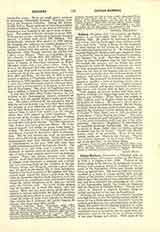

Caldara, POLIDORO (DA CARAVAGGIO), an Italian painter, b. at Caravaggio, 1492 (or 1495); d. at Messina, 1543. He passed his boyhood in poverty and misery, leaving Caravaggio when eighteen years old to seek work. Going to Rome, he was employed to carry mortar for the artists in the Vatican who were painting frescoes for Leo X. He watched them copying Raphael‘s designs, and soon emulated them so successfully that he attracted Raphael‘s attention and became his pupil. Maturino and Udine, for whom he prepared plaster, were his first instructors. He studied the antique, and the friezes and other ornaments he made for Raphael‘s pictures are noted for their appropriateness and Athenian purity. Caldare was the first of the Roman masters to employ chiaroscuro, probably from his profound study of the antique; and color was a secondary consideration with him. He decorated the exterior of many Roman palaces in sgraffito, a form of painting where, over a dark background, often stucco, a lighter-colored layer was painted, and designs, scratched through the light layer, only showed dark on light (en camaieu).
These designs are known today only from reproductive etchings and engravings from the hands of Alberti and Goltzius. When Rome was sacked in 1527, Caldara went to Naples, where he was helped by Andrea da Salerna. He started a school and received many commissions for frescoes. He left Naples for Sicily and in Messina attained great success. He painted the triumphal arches erected on the return of Charles V from Tunis, and in 1534 produced his masterpiece, “Christ Bearing the Cross”. This oil is grand in conception and composition, and is treated in a far more naturalistic style than any of his other paintings. One of his “Magdalena” is celebrated for its beautiful landscape background. He was about to return to Rome (1543) when his Sicilian servant murdered him for his money. Naples and Messina possess many of his paintings. Some of his noteworthy works are: friezes in the Vatican; “Psyche received into Olympus“, in the Louvre, Paris; “Passage of the Red Sea“, in the Brera, Milan.
LEIGH HUNT

